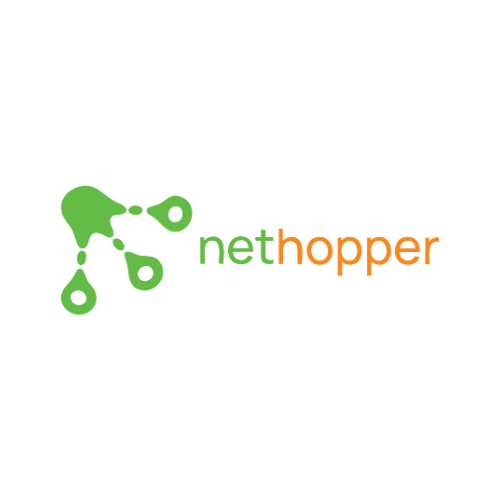HPE adds Nethopper’s GitOps platform to HPE GreenLake Marketplace
- Chris Munford

- Mar 9, 2023
- 5 min read
Updated: Jul 17, 2024
By Nethopper Founder and CEO Chris Munford and HPE Ezmeral Software Product Manager Shreyans Mulkutar
HPE Greenlake, HPE Ezmeral software, and Nethopper GitOps platform offer a complete package for application DevOps teams including cloud infrastructure, Kubernetes runtime, and a GitOps-based cloud platform.
When Dev and Ops became DevOps
A couple of decades ago, when Development (Dev) met IT operations (Ops), it was love at first sight. The relationship grew to become well balanced, with clear roles and responsibilities. Dev would write code and create images, and Ops would simply put them on Linux machines or VMs. Maintaining a healthy relationship between Dev and Ops has required commitment and dedication. The sacrifice was worth the reward, as it produced well adjusted "applications."
Happiness continued for many years, until recently when the Dev and Ops moved to cloud-native Kubernetes, under the DevOps model.

In the new DevOps model where "you build it, you ship it," Dev is now expected to assume some of the Ops responsibilities, such as software infrastructure configuration, application and deployment processes. But with Kubernetes, the Ops responsibilities are not what they used to be. They have become more complex.
Ops responsibilities now have much more than just images to deal with. Instead, it also has to deal with hundreds of containers, YAML files, secrets, services and other artifacts.
Also, Ops responsibilities now include delivering infrastructure on-demand, both on-premise and in the cloud.
In addition, Ops’ Linux skills are no longer sufficient, requiring becoming proficient with cloud and container technologies.
The balanced relationship that existed before is no longer balanced and well defined. Friction and burnout have ensued. There are recent reports that DevOps might break up or that "DevOps is dead." DevOps teams everywhere are trying to make it work and looking inward to see the root of the problem and how to solve it. After much counseling, many of them have chosen a GitOps platform to restore the balance, as a key to lasting success. Why?
The real problem plaguing DevOps
The Dev part of DevOps is productive as ever. Dev teams are creating the applications and features that the business needs. In other words, Dev teams’ architect, develop, test, and release their code like they always have. By contrast, the Ops part of DevOps is experiencing a dramatic change in their daily responsibilities with the adoption of cloud-native Kubernetes. For example, consider what happens when a developer needs a test environment. Often, each developer (and QA person) requires their own cloud infrastructure, complete with a Kubernetes cluster and management. But then, the following questions arise:
Who creates and maintains that infrastructure?
Who continually puts all the containers and other pieces onto these K8s clusters?
When any container or artifact changes, which typically happens several times a day, who makes the updates? Of course, it depends on the adopted CI/CD pipeline process and new ways to optimize it with new continuous delivery and continuous deployment processes.
When the application breaks, who is responsible for detecting and troubleshooting?
So, with all this work to do, the DevOps team must either grow very large or be forced to automate to keep up with the changes in Ops responsibilities. Since Kubernetes-skilled staff is difficult and expensive for the business to hire, what are the options that the DevOps team has for automation?
Develop scripts to do the job faster. This will work, for a moment. However, this is generally a short-term solution that won’t survive the next process change (i.e., open-source software version change).
Develop a platform that can grow and change with the company. This is a significant effort that takes years and dozens of people to build and support. This also requires IT to hire full stack software developers. A common term for this approach is called “platform engineering.” If the business has the time and money to re-focus on building Ops platforms, then it is a viable option. However, most companies can’t do this successfully.
Cloud PaaS. Rent or buy an existing enterprise DevOps platform that leverages popular open source tools and that is capable of cloud-native operations. Even better, if that platform can be consumed in the cloud, it reduces the Ops burden and increases their support.
Many DevOps teams have tried option 1 and 2 with poor results, and they are finding success with option 3.
To the rescue: HPE GreenLake, HPE Ezmeral, and Nethopper GitOps Platform
Together, HPE Greenlake, HPE Ezmeral Runtime Enterprise, and Nethopper GitOps platform will offer a complete package for application DevOps teams including cloud infrastructure, Kubernetes runtime, and a GitOps-based Cloud Platform.
Nethopper recently was added into the HPE GreenLake Marketplace after its validation on the HPE Ezmeral Runtime Enterprise. Nethopper Kubernetes Application Operations (KAOps) is a pre-integrated software platform, delivered as a service, running in the cloud and ready for consumption by application DevOps teams. You can automate many of the DevOps steps to download, build and support your application stack. KAOps works with all your private and public-clouds and Kubernetes distributions, giving you cloud portability — or the freedom to choose and change your cloud and Kubernetes providers.
HPE Ezmeral Runtime Enterprise is an enterprise-grade software orchestration platform that allows users to easily organize compute and storage resources and quickly create Kubernetes clusters on those resources. Multiple versions of Kubernetes can be running at the same time under HPE Ezmeral Runtime Enterprise management. Using HPE Ezmeral Runtime Enterprise, users deploy cloud-native applications at scale across data centers, multiple clouds, and at the edge. Alternatively, users can deploy their cloud-native applications on HPE GreenLake for Private Cloud Enterprise — an automated, flexible, scalable, and enterprise-grade private cloud offered by HPE.
Combining HPE Greenlake, HPE Ezmeral Runtime Enterprise, and Nethopper GitOps allows DevOps to avoid common mistakes when transforming to cloud-native practices, such as:
Cloud provider lock-in
Stranded/wasted cloud infrastructure
Unplanned application downtime
Slow application feature velocity
Chaotic DevOps procedures
This joint solution will work with all cloud native apps in all vertical markets, and has many use cases, including the following:
Distributed application deployment across data centers, collocations, edge and cloud locations.
Load balancing traffic across Kubernetes clusters deployed in hybrid environments.
Cloud backup and disaster recovery
Data center migration
In summary, a Cloud Ops platform like Nethopper KAOps and HPE Ezmeral can keep your DevOps team working together as one on their journey to cloud-native Kubernetes. If you would like to learn more, please visit the nethopper.io page on HPE GreenLake Marketplace.
Meet Chris Munford, Nethopper Founder and CEO
Chris Munford is the founder and CEO of Nethopper Inc, a pioneer in KAOps — Kubernetes Application Operations platform. Chris is an electrical engineer and has held leadership roles in engineering, product management, solution architecture, and sales at five Boston- and Silicon Valley-based technology startups over the last 25 years. Chris started Nethopper to give DevOps control of microservice container placement and communications over multiple clusters located in any site, cloud, network, or K8s platform.
Meet Shreyans Mulkutar HPE Ezmeral Software Product Manager
Shreyans Mulkutkar is a product manager focused on HPE Ezmeral software. He is interested in cloud computing, distributed systems, and the cloud native ecosystem. Shreyans has a decade of experience, in both product management and engineering disciplines. He is passionate about building innovative hybrid-cloud enterprise software products and making complex technical offerings easy to understand for customers.



